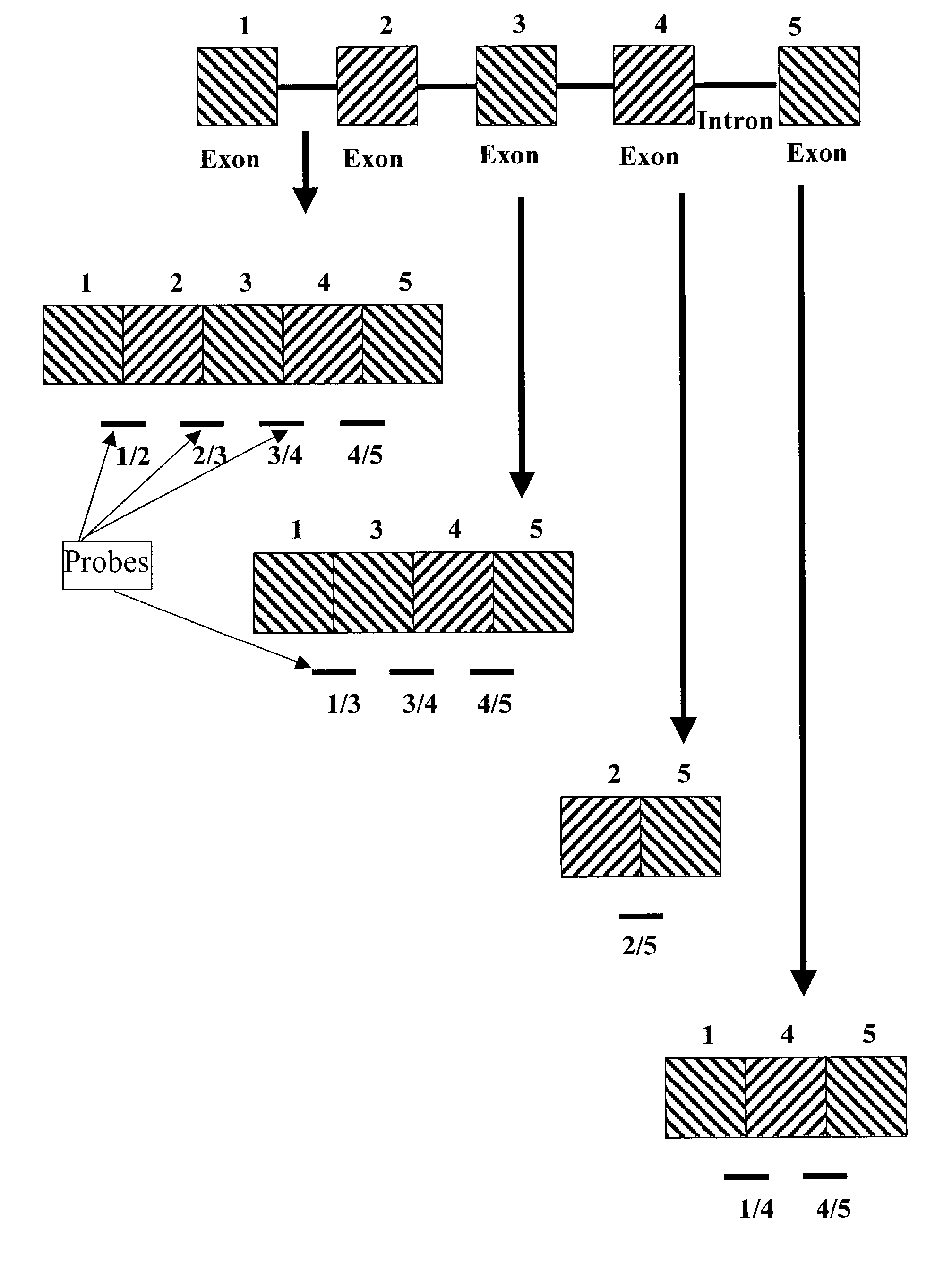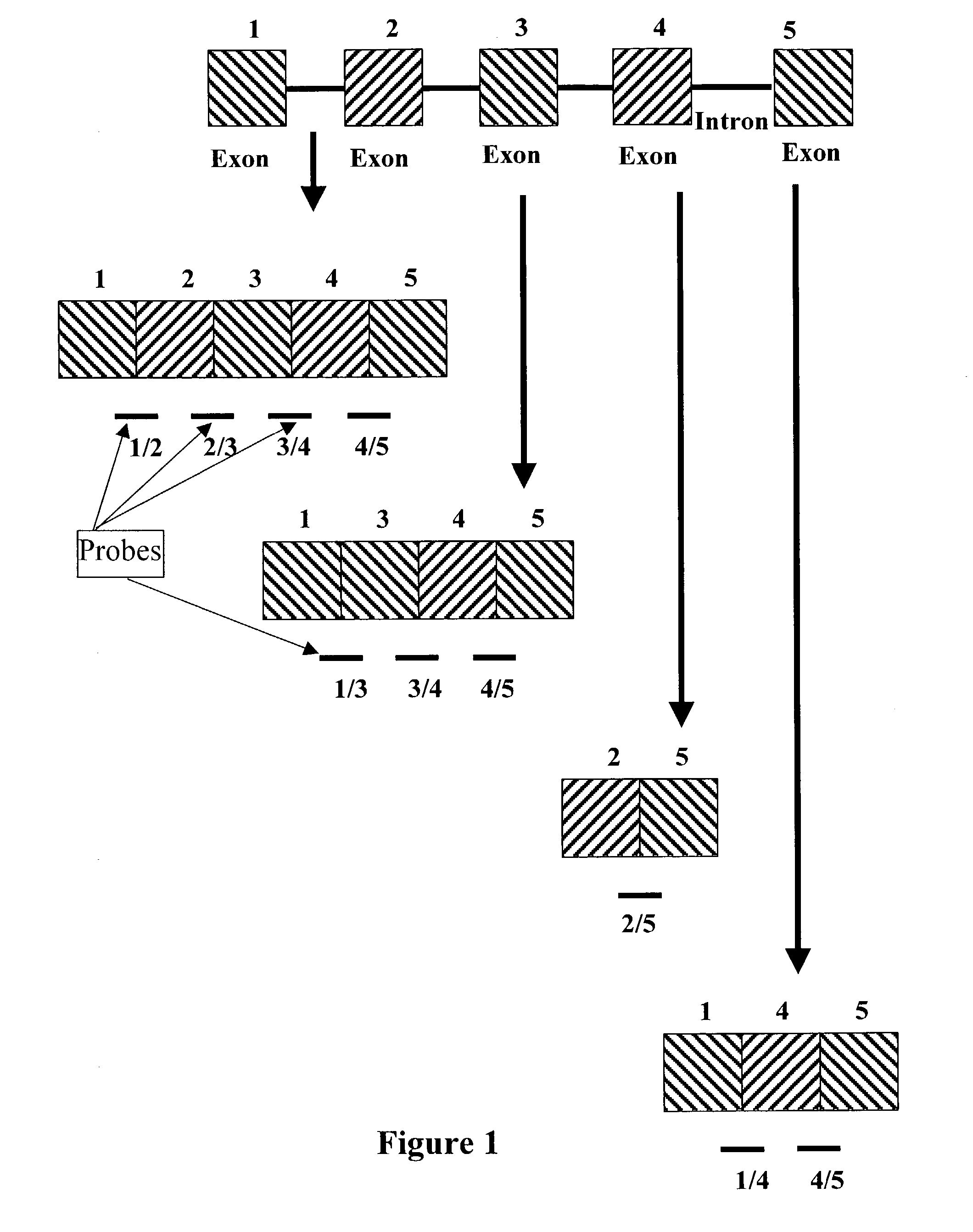Detection of alternative and aberrant mRNA splicing
a technology of aberrant mrna and mrna splicing, which is applied in the field of alternative splicing of premrna, can solve the problems of not being able to use northern blotting methods, unable to detect only high copy number transcripts, and unable to provide information regarding specific exon inclusions or removals
- Summary
- Abstract
- Description
- Claims
- Application Information
AI Technical Summary
Problems solved by technology
Method used
Image
Examples
Embodiment Construction
[0026] Disclosed is a method for determining alternative splicing of a mRNA transcript polynucleotide. The method identifies alternative splicing of a sample polynucleotide by its hybridization to exon variable polynucleotide probes. These probes are complimentary to both the 3' exon junction sequence and the 5' exon junction sequence of adjoining exon sequences of a gene transcript. Detection of the hybridized polynucleotide identifies a sample polynucleotide as containing two specific adjoining exon sequences of a gene transcript, with the understanding that the exons can be contiguous or non-contiguous.
[0027] In order to facilitate review of the various embodiments of the present invention and provide an understanding of the various elements and constituents used in making and using the present invention, the following terms used in the invention description have the following meanings.
[0028] The term "polynucleotide," as used herein, is a composition or sequence comprising nucle...
PUM
| Property | Measurement | Unit |
|---|---|---|
| temperatures | aaaaa | aaaaa |
| pH | aaaaa | aaaaa |
| pH | aaaaa | aaaaa |
Abstract
Description
Claims
Application Information
 Login to View More
Login to View More - R&D
- Intellectual Property
- Life Sciences
- Materials
- Tech Scout
- Unparalleled Data Quality
- Higher Quality Content
- 60% Fewer Hallucinations
Browse by: Latest US Patents, China's latest patents, Technical Efficacy Thesaurus, Application Domain, Technology Topic, Popular Technical Reports.
© 2025 PatSnap. All rights reserved.Legal|Privacy policy|Modern Slavery Act Transparency Statement|Sitemap|About US| Contact US: help@patsnap.com



